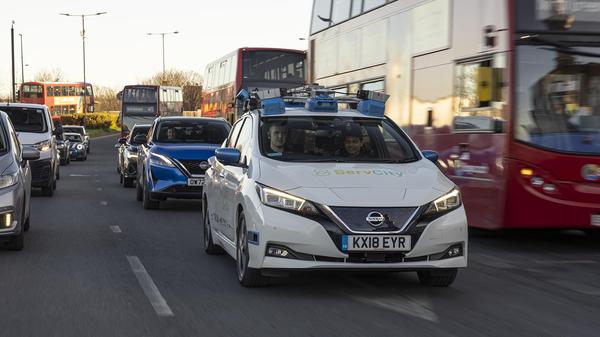News
Sustainability Newsletter - August 2023
Zapmap reports increased charger installations, Lime's e-mobility revolution and Nissan's autonomous driving


Words by: Erin Baker
Published on 7 August 2023 | 0 min read
Some great eco initiatives have hit our roads this month, not just from car brands, but also the new arrivals in the world of charging networks, apps and e-mobility start-ups.
First up, it’s Zapmap, which is an old hand in the world of electric cars now, having launched a comprehensive map of the UK’s public charging points in 2014, well before EVs were much of a thing. Its app, which has been downloaded over a million times, shows users where 95 per cent of the UK’s points are, how fast they are and if they are in use or have reported issues. According to Zapmap, the number of charging points being installed is increasing rapidly, which is good news for the millions of drivers without driveways and therefore home charging points. An average of 891 charging devices were installed every month in the first half of 2022. In the same six-month period this year, that rose to an average of 1,622 installations a month. Zapmap is not resting on its laurels, however. It’s now supporting in-car viewing of live charge points and working with Apple CarPlay and Android Auto to produce routes that include the points, much like Tesla’s sat-nav has always provided for its owners. Second this month in our eco hero-gram is Lime. An American micro-mobility business focusing on e-bikes and e-scooters, and describing itself as “the largest shared electric vehicle company in the world”, Lime launched in the UK in 2018. It is on a major carbon-free, urban transport mission over here, and has launched its shared e-bike and e-scooter scheme in London, Derby and Nottingham. The company focuses on supporting local communities: over 1.5m people have cycled on Lime e-bikes so far, and the company has enjoyed a 317 per cent year-on-year growth in trips taken. All its e-bikes, e-scooters, warehouses and offices are powered by renewable energy via Octopus Energy. At the other end of the business model, Lime has partnered with a British sustainable design company called Gomi to recycle its defunct Lime e-bike batteries, turning them into zero-waste portable Bluetooth speakers. We love the holistic approach to lowering its carbon footprint, from the cradle to the grave of the product.
First up, it’s Zapmap, which is an old hand in the world of electric cars now, having launched a comprehensive map of the UK’s public charging points in 2014, well before EVs were much of a thing. Its app, which has been downloaded over a million times, shows users where 95 per cent of the UK’s points are, how fast they are and if they are in use or have reported issues. According to Zapmap, the number of charging points being installed is increasing rapidly, which is good news for the millions of drivers without driveways and therefore home charging points. An average of 891 charging devices were installed every month in the first half of 2022. In the same six-month period this year, that rose to an average of 1,622 installations a month. Zapmap is not resting on its laurels, however. It’s now supporting in-car viewing of live charge points and working with Apple CarPlay and Android Auto to produce routes that include the points, much like Tesla’s sat-nav has always provided for its owners. Second this month in our eco hero-gram is Lime. An American micro-mobility business focusing on e-bikes and e-scooters, and describing itself as “the largest shared electric vehicle company in the world”, Lime launched in the UK in 2018. It is on a major carbon-free, urban transport mission over here, and has launched its shared e-bike and e-scooter scheme in London, Derby and Nottingham. The company focuses on supporting local communities: over 1.5m people have cycled on Lime e-bikes so far, and the company has enjoyed a 317 per cent year-on-year growth in trips taken. All its e-bikes, e-scooters, warehouses and offices are powered by renewable energy via Octopus Energy. At the other end of the business model, Lime has partnered with a British sustainable design company called Gomi to recycle its defunct Lime e-bike batteries, turning them into zero-waste portable Bluetooth speakers. We love the holistic approach to lowering its carbon footprint, from the cradle to the grave of the product.

Nissan is meanwhile doing commendable work with its ServCity project, which is part-funded by the Government and is a huge project looking at autonomous driving both as a means to eliminate urban carbon emissions but also create more inclusive transport systems for the elderly and disabled. As part of the project, Nissan is conducting autonomous driving trials in a Leaf in London’s Greenwich. Autonomous driving is a key pillar of the Nissan Ambition 2030 statement of intent for a “cleaner, safer and more inclusive world” and self-driving cars, Nissan argues, will not only decrease carbon emissions by reducing congestion through a smoother flow of traffic, but they will also improve access to transport for underserved demographics such as those in rural areas without access to buses and trains, or the elderly and disabled who find access to the public transport system difficult.
Jaguar Land Rover also deserves a mention this month for the learnings it has taken from Jaguar’s involvement in Formula E and applied to its road cars to lower carbon emissions. In preparation for each Formula E race the Jaguar TCS Racing team models and simulates every circuit where the divers press and lift off the accelerator at the optimal time, enabling them to conserve as much energy as possible. Software learnings from this process went into the development of the predictive energy optimisation function for the F-Pace and E-Pace plug-in hybrids - you enter your destination on the sat-nav, and the car splits the journey into 100m segments for analysis, working out when to use the electric motor and when to use the engine. The system also makes sure you have at least four miles of electric range in reserve. Which is useful if you live in an ultra-low emission zone.
Jaguar Land Rover also deserves a mention this month for the learnings it has taken from Jaguar’s involvement in Formula E and applied to its road cars to lower carbon emissions. In preparation for each Formula E race the Jaguar TCS Racing team models and simulates every circuit where the divers press and lift off the accelerator at the optimal time, enabling them to conserve as much energy as possible. Software learnings from this process went into the development of the predictive energy optimisation function for the F-Pace and E-Pace plug-in hybrids - you enter your destination on the sat-nav, and the car splits the journey into 100m segments for analysis, working out when to use the electric motor and when to use the engine. The system also makes sure you have at least four miles of electric range in reserve. Which is useful if you live in an ultra-low emission zone.